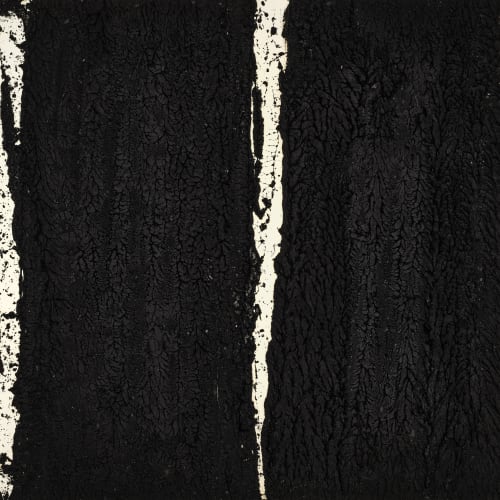Richard Serra (San Francisco, USA, 1938 – Orient, New York, 2024) was a pioneering sculptor whose monumental steel works redefined the relationship between space, material, and the viewer’s movement. He studied at the University of California, Berkeley and Santa Barbara before earning an MFA from Yale University, where he engaged deeply with painting and printmaking before transitioning to sculpture. His early experiments with industrial materials such as lead and rubber informed his later use of massive Cor-Ten steel sheets, which he bent, tilted, and arranged to create immersive spatial experiences.
Serra’s work is characterized by an emphasis on process, weight, and balance, often engaging with notions of gravity and instability. His large-scale site-specific installations challenge conventional sculpture by demanding active physical engagement from the viewer. While best known for his sculptural interventions in urban and natural landscapes, Serra maintained a significant drawing practice, using dense black paintstick, etching ink, and handmade paper to create works that parallel the weight and materiality of his sculptures.
Serra exhibited widely, including multiple editions of Documenta and the Venice Biennale, with major retrospectives at The Museum of Modern Art, New York, and the Guggenheim Museum Bilbao. His works are held in the collections of leading institutions worldwide, including the Centre Pompidou, Tate Modern, and Dia:Beacon. A key figure in post-minimalism, Serra transformed both sculpture and drawing into rigorous explorations of physical and perceptual experience, leaving a lasting impact on contemporary art.

